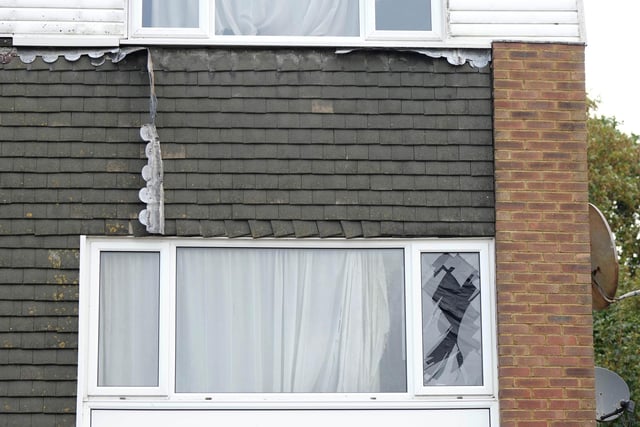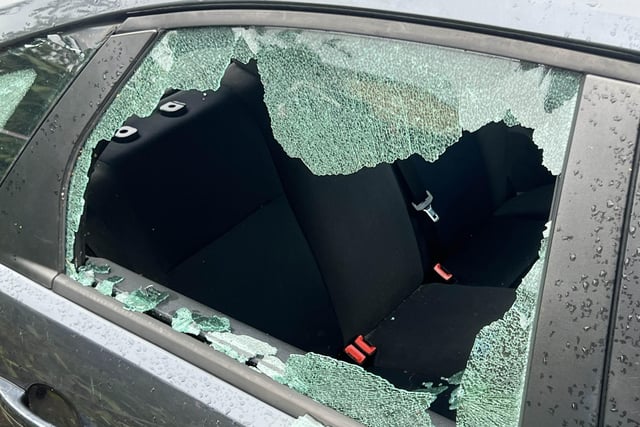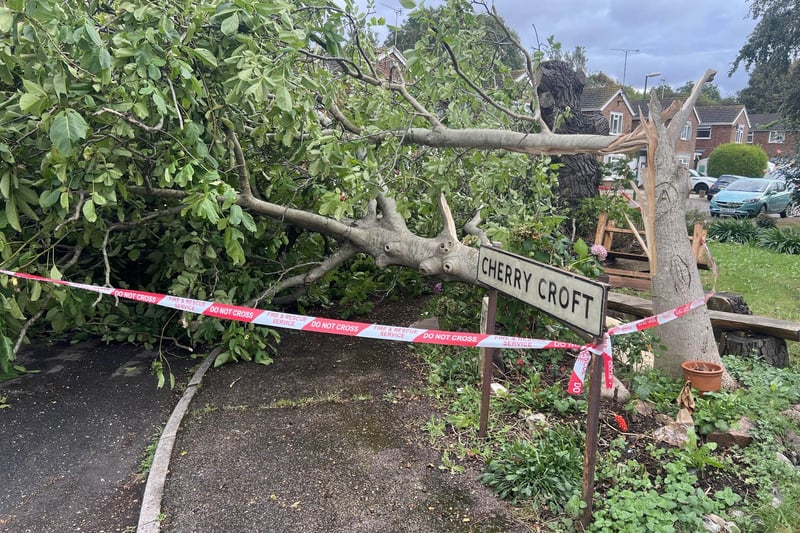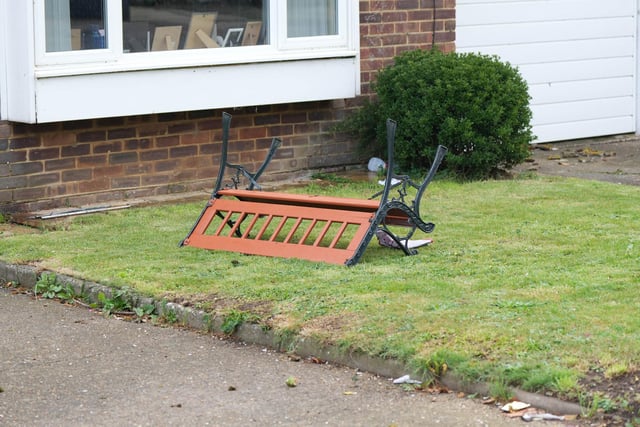Sussex was hit by thunder and lightning overnight on Monday but one town was struck harder than others amid reports of a ‘mini tornado’ – with one person left injured and at least 20 cars damaged.
Photos painted a scene of destruction in Littlehampton, with houses damaged and car windows smashed, whilst trees and brick walls fell over. There were also reports of rain water leaking into properties. Click here to read an eye-witness account.
The Tornado and Storm Research Organisation (TORRO) said on Monday morning that it was ‘aware of severe wind damage’ in Littlehampton.
A TORRO tornado site investigator, named Sarah, wrote on X (formerly Twitter): “We intend to conduct a site investigation this week to determine whether or not this was a tornado. Requests for information please.”
Sarah confirmed on Tuesday evening that the impact of the severe weather event was also felt in Wick – and ‘was caused by a tornado’.
A social media update read: “In brief, as it has been a long day of interviewing people, plotting damage and assessing the situation, with 14 miles of walking thrown in. @TorroUK can confirm that the damage in Wick and Littlehampton was caused by a tornado.
"Probably making landfall around West Beach, fairly weak, it looks to have strengthened in Wick, before weakening again. Provisional rating (subject to change after more analysis) briefly T2, mostly T1. Provisional length c. 3.5km.”
What are tornadoes?
According to the Met Office, tornadoes are ‘one of the most violent and dramatic weather types’ on the planet and ‘demonstrate the awesome destructive power of our turbulent atmosphere’.
A tornado is a ‘rapidly rotating column of air’ that reaches between the base of a storm cloud and the Earth's surface.
“They form in very unsettled weather conditions as part of severe thunderstorms,” a Met Office spokesperson added.
"Many conditions need to be present for a tornado to form but, when these conditions are met, a violently whirling mass of air, known as a vortex, forms beneath the storm cloud.
“A funnel cloud usually develops as the vortex forms due to the reduced pressure in the vortex. Strong inflowing winds intensify, and the spin rate increases as the vortex stretches vertically. If it continues stretching and intensifying for long enough the vortex touches the ground, at which point it becomes classified as a tornado. The tornado then moves across the surface causing severe damage or destruction to objects in its path.”
How big are they?
The Met Office said tornado size and intensity ‘vary greatly’.
"Typically, a tornado is 20 to 100 metres wide at the surface, lasts for a few minutes and has a track of around a mile (1.6km). Wind speeds typically range from 75 to 100 mph (120 to 180 km/h). The largest tornadoes are very rare occurrences. They can be over two miles (3.2 km) wide, track for over 60 miles (100 km) and have wind speeds in excess of 300 mph (480 km/h).
“A large, violent tornado passing through a populated area can lead to total destruction of buildings and property in its path and sometimes loss of life.
"Such large tornadoes are in the minority of occurrences. Most tornadoes, although they produce damaging winds, do not lead to the widespread devastation often associated with these weather events in the media. Tornado damage is localised; limited by the track of the tornado.”
Are they rare in the UK?
A resident in Eastbourne captured footage of a tornado off the coast of Eastbourne in November 2021.
A spokesperson from the Met Office said at the time: “Tornadoes are fairly common in the UK, especially in this time of year. We typically see around 30 a year in the UK.
“They tend to be small and short-lived, but can cause structural damage if they pass over built up areas.”
Tornadoes occur most often in North America, weather experts said. The most violent tornadoes are ‘rarely seen anywhere but the USA, Canada and Bangladesh’.

1. 'Mini tornado' hits Littlehampton
'Mini tornado' hits Littlehampton Photo: Eddie Mitchell

2. 'Mini tornado' hits Littlehampton
'Mini tornado' hits Littlehampton Photo: Eddie Mitchell

3. 19-9-23 Colebrook Road, Cherry Croft Wick Littlehampton mini tornado- 20 cars damaged, some moved, lady had double glazed window blow in on her and injured, walls and fences down, trees blown down, Barry Keevins has words 07515 382 675
Mini tornado in Littlehampton Photo: Eddie Mitchell

4. 'Mini tornado' hits Littlehampton
'Mini tornado' hits Littlehampton Photo: Eddie Mitchell